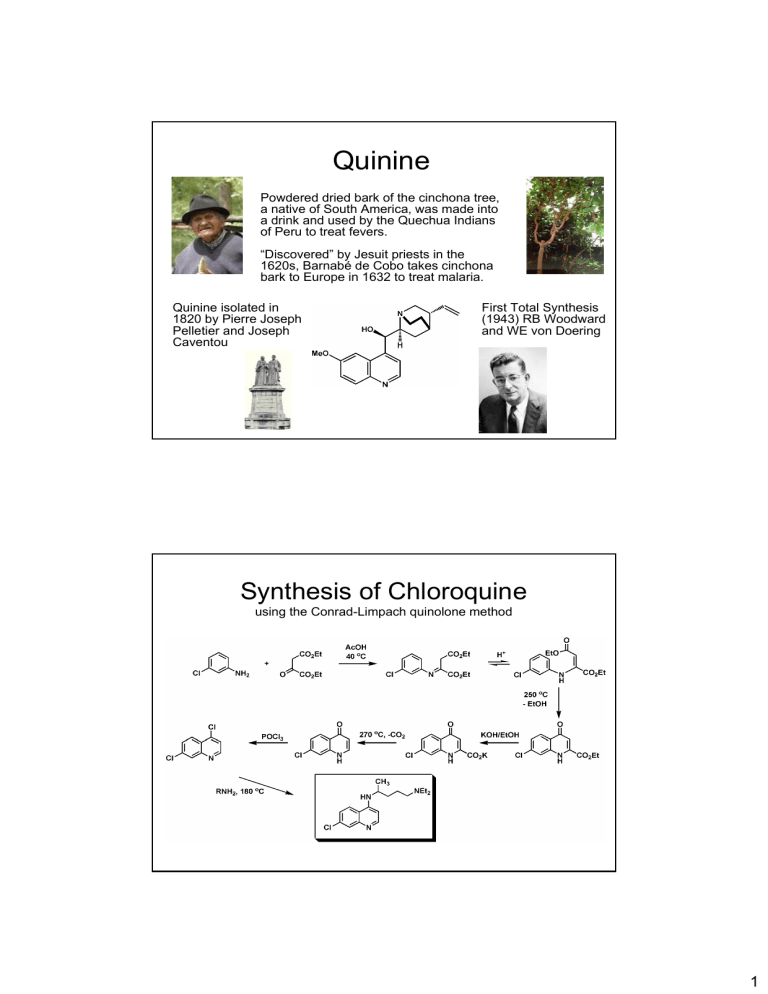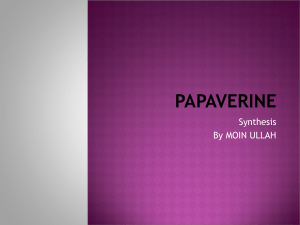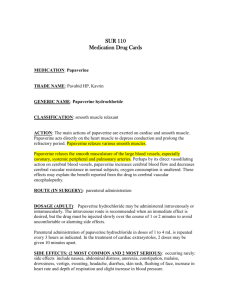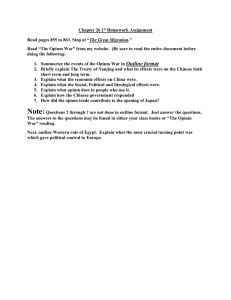
Quinine Powdered dried bark of the cinchona tree, a native of South America, was made into a drink and used by the Quechua Indians of Peru to treat fevers. “Discovered” by Jesuit priests in the 1620s, Barnabé de Cobo takes cinchona bark to Europe in 1632 to treat malaria. Quinine isolated in 1820 by Pierre Joseph Pelletier and Joseph Caventou First Total Synthesis (1943) RB Woodward and WE von Doering Synthesis of Chloroquine using the Conrad-Limpach quinolone method 1 Papaverine Papaverine is an opium alkaloid found in the opium poppy, but papaverine differs in both structure and pharmacological action from the other opium alkaloids. Paperverine is a smooth muscle relaxant. It belongs to the group of medicines called vasodilators. Vasodilators cause blood vessels to expand, thereby increasing blood flow, and are used to treat problems resulting from poor blood circulation. Synthesis of Papaverine using the Pictet Gams modification of the Bischler-Naperialski method 2




